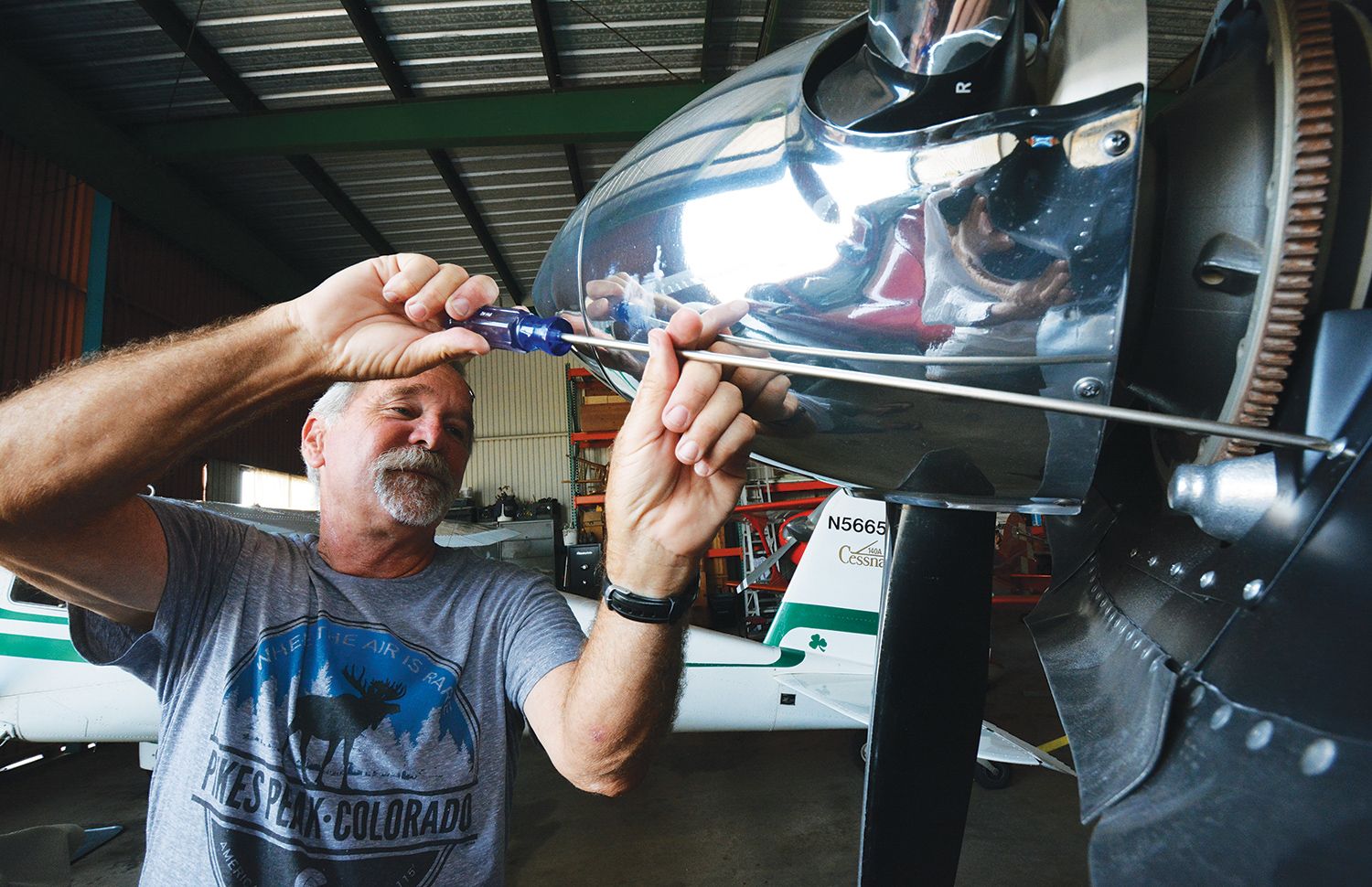
For those building a new airplane, chances are you’re getting more than familiar with certain tools at different stages of the build. For me, though, it’s not about building because my airplane has been buzzing and shaking for 41 years now. It’s about chasing cracks and keeping stuff from falling off or going through the maintenance routines and adding electronics the government thinks I can’t go without.
As it seems stuff fails or needs upgrading in random order on an older Experimental, there’s an equally random journey through the toolbox. At least that means I get to visit a wide variety of tools, some more favored than others. In fact, after decades of wrenching on everything from sport biplanes to tractors, I’ve settled on some preferred tools, most of them of the wrenching variety, I guess. Here are some examples, which in some small way might aid your tool building journey.
Pencil Light Flashlight
This one was sort of a flash in the pan, to switch on yet another atrocious pun. I was given a sturdy aluminum penlight, nearly identical to an unsharpened No. 2 pencil in form. Handy as an opposable thumb, it blended right into a pants or shirt pocket so it was always with you. It was natural to point and put out a bright beam perfect for doing the Inspector Clouseau bit on any random part of an airplane. I found myself using it in conditions I would have never wished for a flashlight before. And, of course, it was simply the stuff in dark corners or really tight spots where it could sneak in to light things up without getting in the way. Sort of like the old inspection lights with their tiny incandescent bulbs out on the end of an antenna-like stalk. Those things were always burning out when they weren’t burning your fingers, and the switches were clunky and failed about as quickly as you could replace them. But the little pencil light was simply the perfect little companion on almost any job.
Of course, because it was so small and unobtrusive, it slipped unnoticed into the fourth dimension at some unknown point and hasn’t been seen in years. Instead, I’ve taken to keeping a squad of compact LED flashlights in my hangar, cars, house and, well, nearly everywhere I go. They’re bright and handy, but not quite like that pencil flashlight.
Ice Pick Shaft
Perhaps 45 years ago, I came across the broken-off shaft of an ice pick. We’re talking a nasty little shank job you might encounter in the big house or some other disreputable place, but it’s arguably become my favorite tool. Its sharp point and slender shaft easily reach into little recesses, and even when you might not need such a slender tool, it does the job while leaving generous room around itself so you can see what you’re doing. It picks up the slightest edge and is perfect for whipping out circlips and retaining rings, such as those that hold wheel bearings in Cleveland wheels. It picks up washers like a magnet and, best of all, is exceptional when aligning multiple panels or parts preparatory to passing a bolt through them. You’d think that with no handle it would be too small or finicky to manipulate, but the reverse is true. It’s so lightweight and evenly balanced it doesn’t take any dexterity to handle and maneuvers like a sports car when lining up troublesome pieces. It doesn’t even contribute any bulk when carrying a fistful of tools to or from the job and, all told, if I lost the little guy I’d go out and break an old ice pick in two to replace it.
Quarter-Inch Snap-on Shorty Ratchet
Thanks to the diminutive hardware we mainly twiddle with, we airplane types are all about 1/4-inch-drive hardware. Today quality 1/4-inch jewelry is common, but it wasn’t always so. Snap-on was where it was at for the little ratchets, but they’ve always been expensive and that third-world junk hanging around auto parts stores was always tempting if only for the price. And so I had my share of little ratchets that would slip, lock up, refuse to switch directions, ratchet once every 60° and generally drive you mad as they fell apart in your hand. And while it took 20 years I, the great fiscal conservative, finally resolved to invest in a shorty Snap-on ratchet. It sits in the drive drawer in my hangar toolbox—right next to some clunky, jerking off-brand imitations I somehow keep around as “spares.” I’ve used that little Snap-on near daily for decades now, but the spares might as well be toolbox ballast.
Long Extensions
While rooting around the ratchet and socket section of the toolbox, I have to mention those long extensions that clang back and forth every time their drawer is opened or closed. Probably because tool sets come with 3- and 6-inch extensions, it can take a while to learn the value of 1-foot or, better yet, 18-inch extensions. Their big advantage is they get the ratchet the heck away from all that stuff that’s in the way. Meaning you don’t bang your hand into things and you can twirl the ratchet like a tee or speed handle much of the time. Maybe your back doesn’t have to bend or reach so far, either. If a long extension will reach, it’s almost always the best solution. And do we need mention that a single long extension has far less slop and bend than several shorter extensions put together? That’s usually a big plus, unless you need to curve your assembly of extensions around some immovable object. Reaching up to the bell housing bolts from the tail-shaft end of the transmission comes to mind should you be getting serious with the shop truck or haven’t outgrown front-engine, rear-drive hot rods.
Universal Joint Sockets
Those long extensions in the previous paragraph really strut their stuff when paired with universal joint sockets. Yeah, those crazy-expensive specialty sockets with the universal joint built right in. Yes, you could use a universal joint added to a standard socket, but not really as often there isn’t enough room for such a tall pairing. But given the long, straight access demanded of a foot and a half long extension, having generous flexibility at the socket really makes them usable. This can demand some investment in ridiculously expensive tool jewelry—although the big-box hardware store stuff isn’t bad these days—but once you’ve got a set of dedicated universal sockets you’ll love ’em. Try tightening or just checking the torque on Lycoming exhaust flange nuts with a wrench, then do the same with a foot and a half long extension and 1/4-inch drive, universal joint 1/2-inch socket and see which you prefer. It’s no contest.
Long Screwdrivers
Long can be a great thing with screwdrivers, too. Curiously, limited access to a fastener often gives a choice between a stubby screwdriver and a really long one. Being so skinny, along with the Phillips drive’s ability to work at silly angles, means screwdrivers don’t need universal joints to reach through complex engineering spaces. (Translation: that rat’s nest between the firewall and the engine’s accessory section.) Going long gets your hand away from the obstacles next to the hardware, and operating a stubby screwdriver is a cramping pain anyway, so ease of use is an uncontested long screwdriver advantage.
I finally made a point of adding a sword-like Phillips to my toolbox after I figured out I could continue torturously removing certain baffles at the front of my engine with a stubby screwdriver because the propeller spinner was in the way, or I could reach past that big polished dome with a long tool. As these baffles must come off for condition inspections, the purchase seemed justified. I was a bit nonplussed to find the usual auto and local hardware stores didn’t carry 18-inch #2 Phillips, but the big-box hardware store did. I try to use the long screwdriver only when necessary as it doesn’t have a replaceable tip, but I have to keep reminding myself.
Huge Slip-Joint Pliers
Not because they’re easy to use, but because I didn’t have any for years, I find a pair of gnarly big slip-joint pliers comforting to have in the background. Sort of like keeping a pair of beefcake security guards on the payroll, brutish slip-joint pliers are just the sort of mean b*%$#@! to show recalcitrant threaded connections who’s boss. Admittedly of limited use—hopefully—on your airplane, they are the thing when adjusting the hangar door or unsticking the fuel cap on your WW-II era tug. And used gently, they’ll get oversized axle nuts going, too.
Three-Quarter-Inch Socket Set
Also at the might makes right level of moral development, I have a 3/4-inch-drive socket set (think bulldozer servicing). There’s some emotional attachment here, as I bought the set in its nifty metal box at a discount store way back when my new bride and I couldn’t pay both the water and electric bills in the same month. I winced and got them because the tools were ridiculously inexpensive. I had no foreseeable use for them other than perhaps using the sockets to drive oil seals, but somehow I knew they’d come in handy. After all, when you need a socket and ratchet that weigh more than some crankshafts, dude you really need a burly socket. I can now report these sockets are the nuts for installing trailer balls on drawbars, and the only socket large enough to remove the 15/16-inch nut on my Starduster’s spinner intermediate bulkhead is in that toolbox. Gets used every condition inspection and never fails to remind me of early days.
To steal Paul P.’s famous saying about coming for the airplanes and returning for the people, visiting favorite tools is an attraction to building and maintaining flying machines. And better tools are better company.







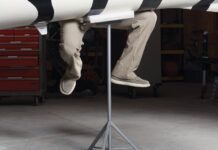
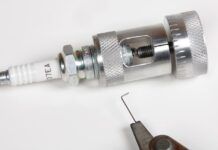
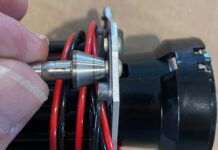
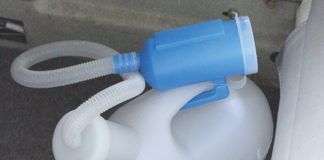

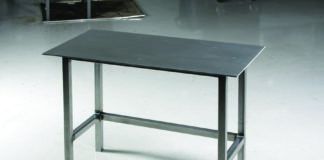

I guarantee that pencil flashlight is rattling around in the belly of an airplane somewhere. When we worked on the stringers of my old Champ we had to slit the belly skin. Out popped a screwdriver and a pair of safety wire pliers. I still have both.
My grandfather bought me a set of 16″ slip-joint pliers when I was a teenager – almost as a joke. They’ve turned out to be really useful over the years. Whether prying out a nail, loosening a stuck jar lid, bending a flange, or turning a random round-ish thing forcefully, they’re amazingly versatile (if you can fit them into the space).
A pencil flashligjt should be easy. An LED, a resistor, a switch, and a battery, in a tube. No need for fancy optics.